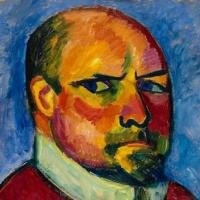Discovering Expressionism
The first dynamic of art that we all learn is expressionism. When you were first able to non-verbally communicate with facial expressions, you were exercising expressionism. It was an outward sign of an inward feeling. When your mom tried to feed you veggies you probably spit it out in a sign of disgust. As you grew you discovered that manipulating expressions could get you in trouble or make you a saint, again, you were using the oldest art form called expressionism.
Expressionism is everywhere. Turn on the tv and you hear it coming out of politicians mouths! Listen to talk radio and you hear half truths made out to be the gospel truth. It is everywhere.
Expressionism as an art form started back in the mid 1400’s with the work of Matthias Grunewald, a German Renaissance painter. He painted alter works for the Catholic Church that depicted a dark side to scenes of the crucifixion. The works were meant to evoke pain and suffering to the viewer in a profound manner.
Matthias Grunewald -Altar Piece
Edvard Munch -The Scream
Jackson Pollock
Jump ahead to 1893 and you see the painter Edvard Munch take expressionism to another level in his most famous work entitled, The Scream. Few artworks have inspired filmmakers, cartoonists and other artists to the extent that The Scream has done. The painting is a radical and timeless expression of human fear.
As we jump ahead to the mid 1950’s we find that expressionism has now unfolded into abstract expressionism through the art of Jackson Pollock. In his work all form and representational elements are gone. You are faced with only paint and canvas and movement. Pollock also painted on the floor and moved around the perimeter of his canvas almost like a dance movement as he used sticks to apply house paint. He broke the ice in seeing in a whole new manner emotionally.
Below is a short video that gives more in-depth information about expressionism describing many other artists through out the world that were a part of the history of expressionism. Please view the video and be prepared to answer the assessment questions that follow.
Assignment:
Complete the form below after reading the material above and viewing the video.
Assignment #2:
The Expressionist German artist Ernst Ludwig Kirchner painted many portraits using vivid colors as a means to add a visual tone or sound to his work. The emotions that each color depicts presents a direct, almost in-your-face directness or confrontation. Your assignment is to produce a self portrait using this expressive form of painting. Choose colors that you fee depict who you are when thinking about emotions. Would you use (visually loud) bold strokes or (visually quiet) light strokes? Use watercolors for this work. When complete send it it ihs.db@yahoo.com with your name, and class.
Portraits by Ernst Ludwig Kirchner






